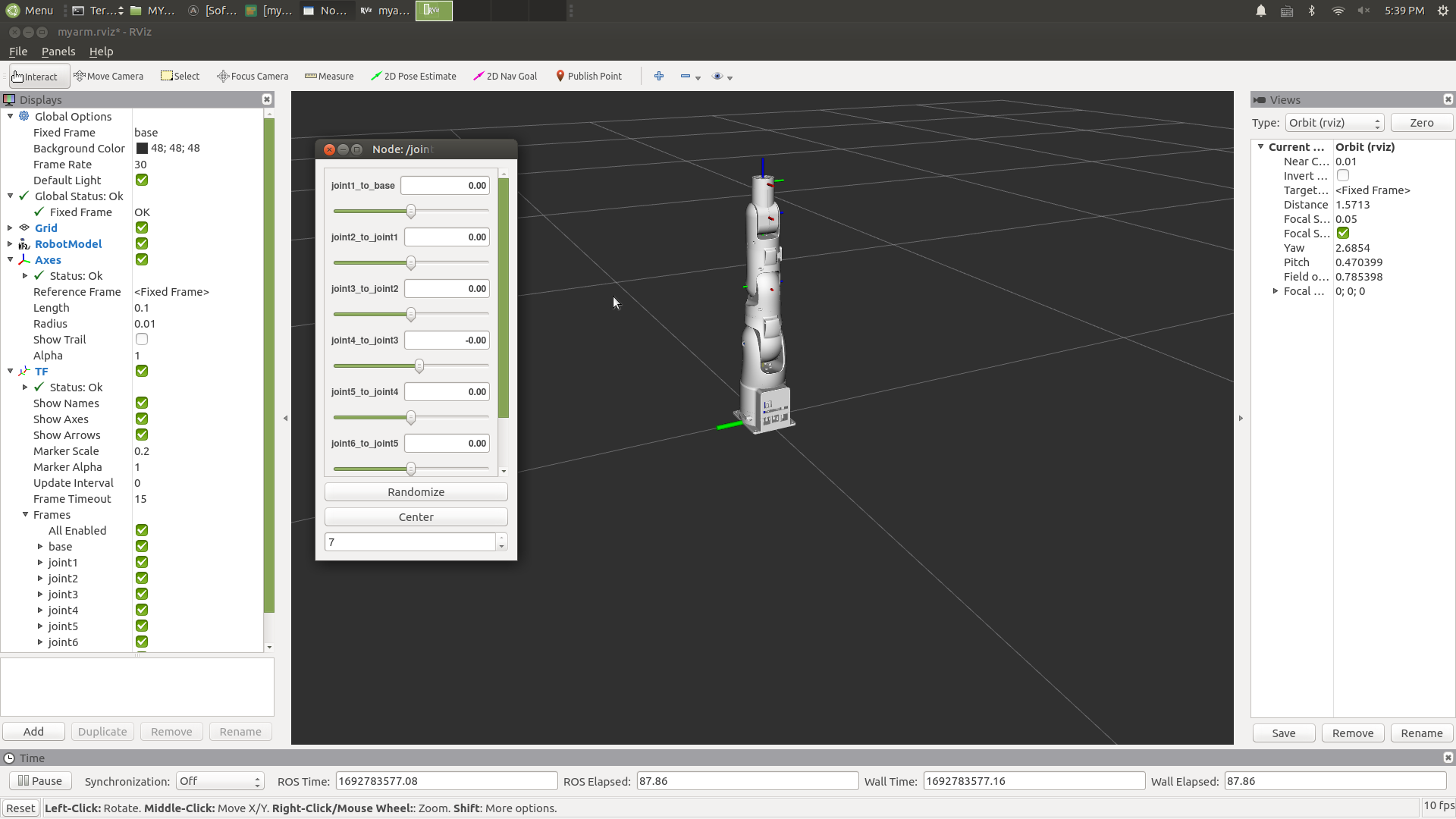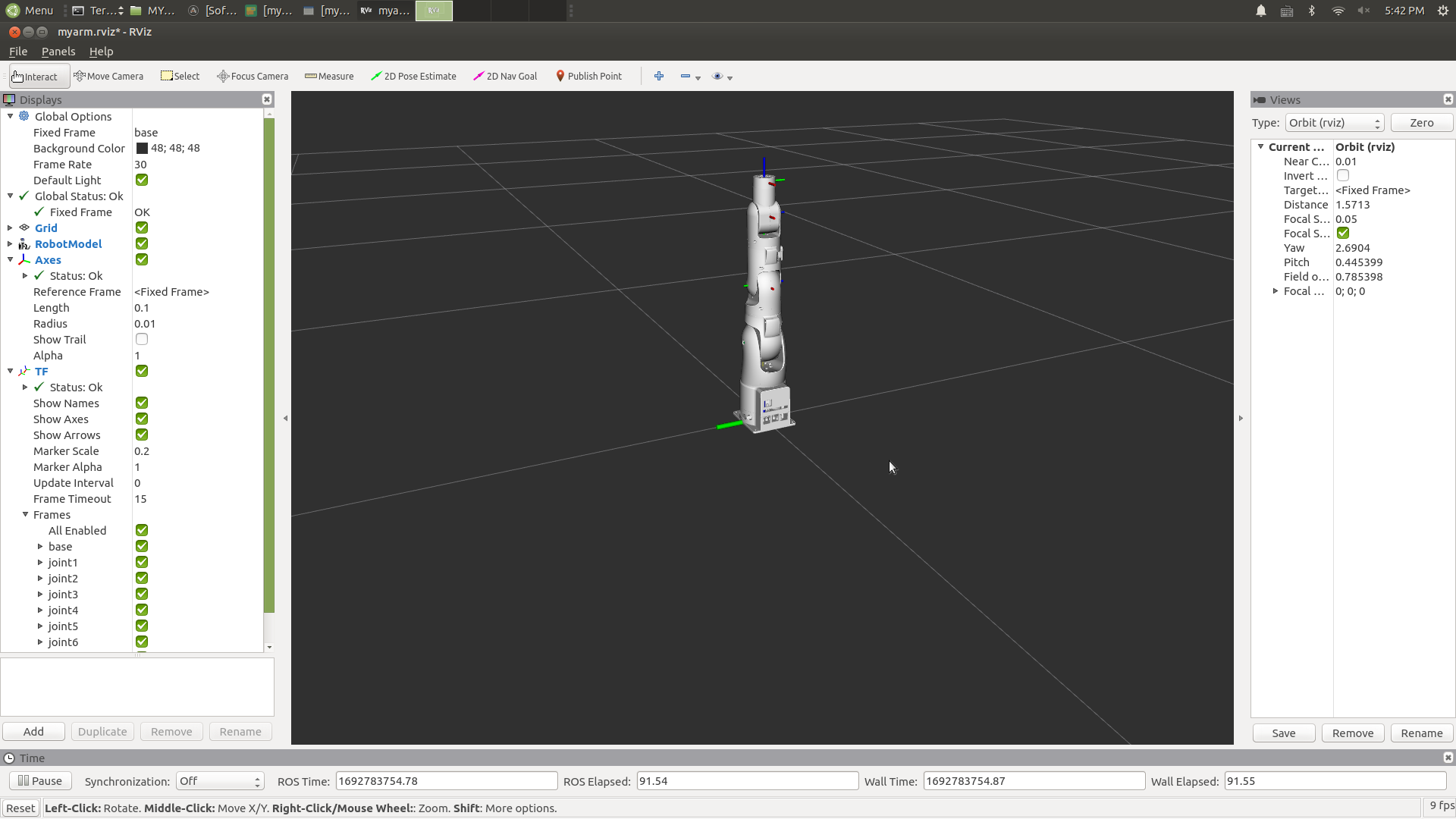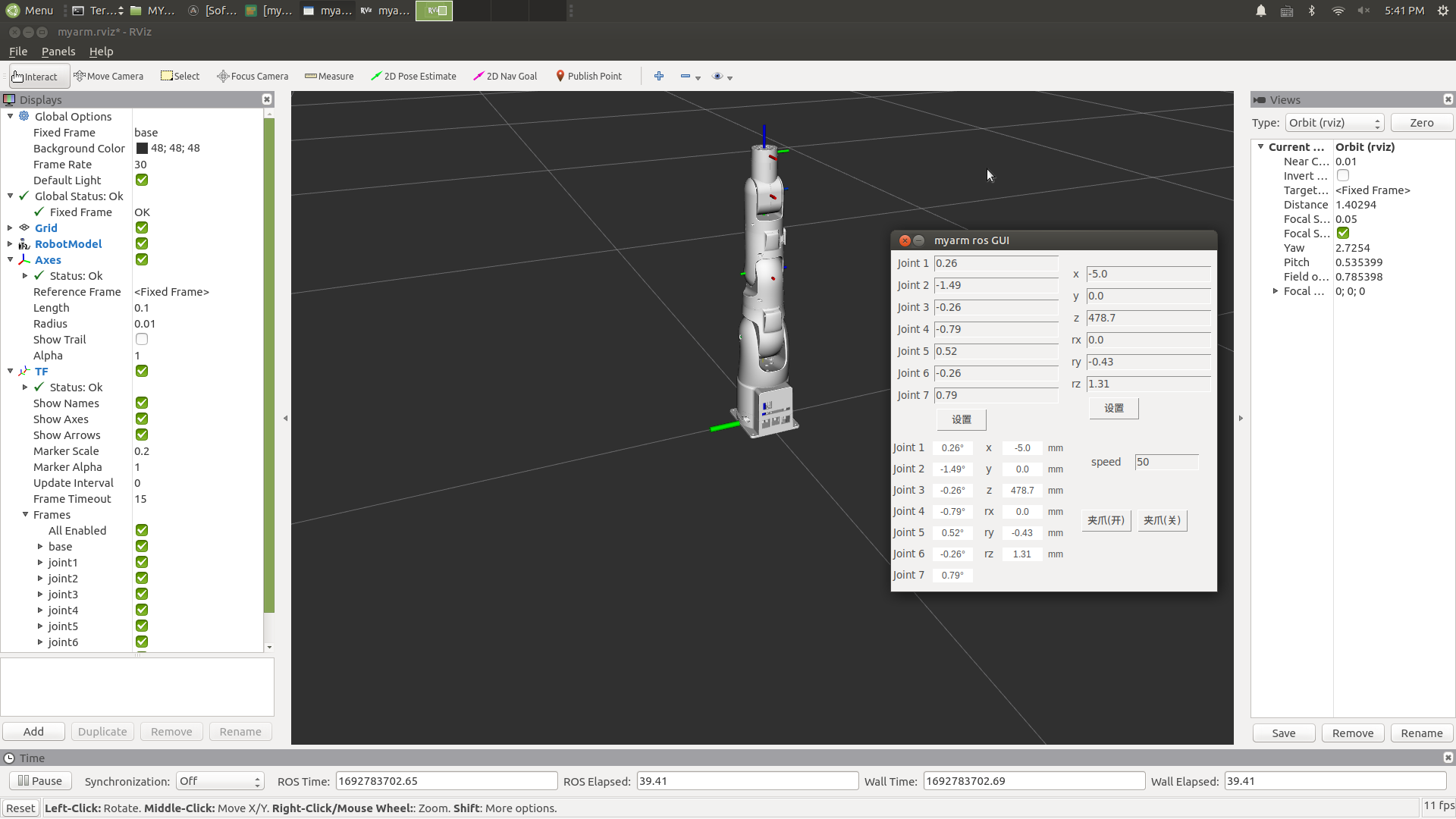Control and following of the robot arm
1 Slider Control
Click the ROS1 Shell icon on the desktop or the corresponding icon in the lower bar of the desktop to open the ROS1 environment terminal:



Then run the command:
# The default serial port name of myArm-300 is "/dev/ttyAMA0", and the baud rate is 115200".
roslaunch myarm slider_control.launch _port:=/dev/ttyAMA0 _baud:=115200
It will open rviz with a slider component and you will see something like this:

Then you can control the movement of the model in rviz by dragging the slider. If you want the real myarm to move together, you need to open another ROS1 environment terminal:



Then run the command:
# The default serial port name of myArm-300 is "/dev/ttyAMA0", and the baud rate is 115200".
rosrun myarm slider_control.py _port:=/dev/ttyAMA0 _baud:=115200
Please note: Since the robot arm will move to the current position of the model when the command is input, please make sure that the model in rviz does not have mold penetration before you use the command Do not drag the slider quickly after connecting the robot arm to prevent damage to the robot arm
2 Model Following
In addition to the above controls, we can also make the model follow the real robot arm movement. Open a ROS1 environment terminal:



Then run the command:
# The default serial port name of myArm-300 is "/dev/ttyAMA0", and the baud rate is 115200".
rosrun myarm follow_display.py _port:=/dev/ttyAMA0 _baud:=115200
Then open another ROS1 environment terminal:



Then run the command:
roslaunch myarm mycobot_follow.launch
It will open rviz showing the model following effect.

3 GUI Control
On the previous basis, this package also provides a simple GUI control interface. This method is intended to link real robotic arms with each other, please connect myArm-300.
Open a ROS1 environment terminal:



Then run the command:
# The default serial port name of myArm-300 is "/dev/ttyAMA0", and the baud rate is 115200".
roslaunch myarm simple_gui.launch port:=/dev/ttyAMA0 baud:=115200
running result:

4 Keyboard Control
Added keyboard control function in myarm package, and real-time synchronization in rviz. This function relies on pythonAPI, so make sure to connect with a real robotic arm.
Open a ROS1 environment terminal:



Then run the command:
# The default serial port name of myArm-300 is "/dev/ttyAMA0", and the baud rate is 115200".
roslaunch myarm teleop_keyboard.launch port:=/dev/ttyAMA0 baud:=115200
The running effect is as follows:

The myArm-300 information will be output on the command line, as follows:
SUMMARY
========
PARAMETERS
* /myarm_services/baud: 115200
* /myarm_services/port: /dev/ttyAMA0
* /robot_description: <?xml version="1....
* /rosdistro: noetic
* /rosversion: 1.15.14
NODES
/
myarm_services (myarm_communication/myarm_services.py)
real_listener (myarm/listen_real.py)
robot_state_publisher (robot_state_publisher/robot_state_publisher)
rviz (rviz/rviz)
ROS_MASTER_URI=http://localhost:11311
process[robot_state_publisher-1]: started with pid [14764]
process[rviz-2]: started with pid [14765]
process[mecharm_services-3]: started with pid [14766]
process[real_listener-4]: started with pid [14782]
[INFO] [1646649869.148017]: start ...
[INFO] [1646649869.156531]: /dev/ttyAMA0,115200
Mycobot Status
--------------------------------
Joint Limit:
joint 1: -160 ~ +160
joint 2: -80 ~ +80
joint 3: -175 ~ +175
joint 4: -100 ~ +80
joint 5: -165 ~ +165
joint 6: -110 ~ +110
joint 7: -165 ~ +165
Connect Status: True
Servo Infomation: unknown
Servo Temperature: unknown
Atom Version: unknown
[INFO] [1646649869.427899]: ready
Then open another ROS1 environment terminal:



Then run the command:
rosrun myarm teleop_keyboard.py
You will see the following output on the command line:
myArm-300 Teleop Keyboard Controller
---------------------------
Movimg options(control coordinations [x,y,z,rx,ry,rz]):
w(x+)
a(y-) s(x-) d(y+)
z(z-) x(z+)
u(rx+) i(ry+) o(rz+)
j(rx-) k(ry-) l(rz-)
Gripper control:
g - open
h - close
Other:
1 - Go to init pose
2 - Go to home pose
3 - Resave home pose
q - Quit
currently: speed: 50 change percent: 5
Parameters supported by this script:
- _speed: The moving speed of the robotic arm.
- _change_percent: Movement distance percentage.